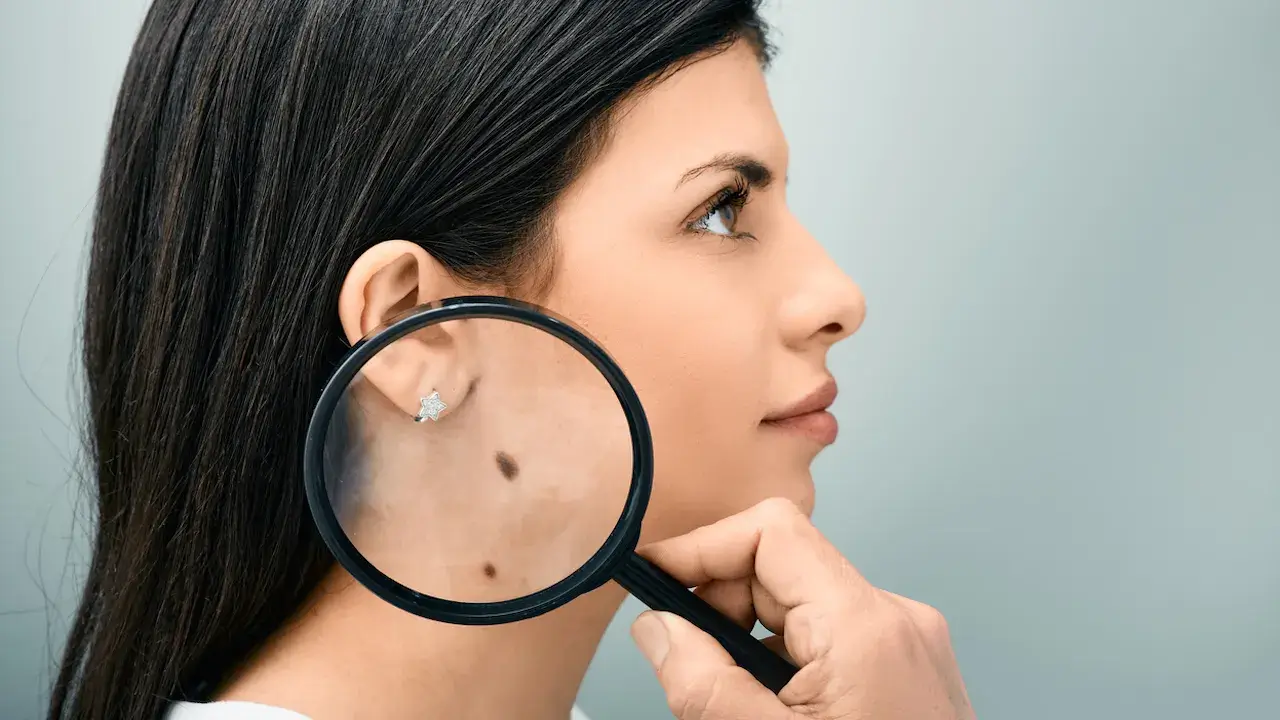Mole (Nevus) Removal is the process of removing unwanted moles from the body by various methods for aesthetic or health reasons. While moles that carry cancer risk in terms of health should be removed, people who want to have moles removed for aesthetic reasons may also prefer this procedure to ensure skin smoothness and get rid of disturbing factors in daily life. Depending on the structure and type of the mole, the most appropriate method is determined and the person can get rid of unwanted moles quickly and comfortably.
What is Mole (Nevus) Removal?
Melanocyte tissues that produce melanin in the skin and give colour to the skin are called nevus (mole). The mole structures formed when the melanocytes in the skin grow in clusters are pink or brown in colour. Moles can be either congenital due to genetic reasons or acquired due to various reasons such as sun exposure, ageing and skin deformation.
While some moles may be disturbing due to aesthetic concerns, some may carry cancer risk. For this reason, the need for removal of moles should be determined by a specialist doctor and the procedure should be performed by choosing the appropriate method.
Before and After Mole Removal
| Before | After |
|---|---|
| Large, prominent and raised moles | Smoother and more even skin surface |
| Moles attached to clothes and accessories | More comfortable use in everyday life |
| Moles that are sensitive to sunlight and darken | Healthy skin with reduced cancer risk |
| Disturbing moles on the face and hands | Aesthetically better appearance |
When Should Mole Removal Be Performed?
In order to remove moles for health purposes, the following changes should be observed:
- Irritation of the skin
- Fast growth
- Bleeding and tissue replacement
- Change in shape and spread
- Lightening or darkening of the surrounding skin colour
Moles with these effects are considered suspicious and should be subjected to pathological examination and evaluated for cancer risk.
Apart from moles that are objectionable in terms of health, flesh moles that disturb the person because they are attached to clothing and accessories and prominent moles in the facial area can also be removed at the request of the person.
How to Remove Mole?
| Method | Description |
|---|---|
| Laser Mole Removal | In small, cancer-free moles, the cells are destroyed by laser beams. It is usually completed in one session. |
| Mole Removal Surgery | In large or suspicious moles, the mole is removed by making an incision under local anaesthesia. Tissue can be sent for pathological examination. |
| Shaving Method | In small and superficial moles, it involves scraping the mole with a scalpel. Since there is no incision, the healing process is faster. |
| Cryotherapy (Freezing Method) | The mole is frozen with liquid nitrogen and crusted from the skin surface. It is especially used in superficial moles. |
What should be done after mole removal?
- Direct sunlight should not be exposed to the application area after the procedure.
- Crusts should not be removed during the healing process.
- Hygiene rules should be observed to prevent the risk of skin infection.
- Attention should be paid to the suture removal process in the stitched areas and dressing should be done regularly.
- After the procedure, the care creams and sunscreens recommended by the doctor should be used regularly.
Mole Removal Prices
Mole removal prices vary according to various factors such as the method applied, the technology used, the experience of the doctor, the need for pathological examination. If you are complaining about the moles on your body or if you suspect that they carry a health risk, you can come to our centre and learn the appropriate mole removal method and price information as an examination.

Frequently Asked Questions (FAQ)
Is Mole (Nevus) Removal Painful?
Since local anaesthesia is applied during the procedure, no pain is felt. In non-surgical methods, even anaesthesia is usually not needed.
Can I grow back after mole removal?
When the moles are completely removed, they do not occur again. However, regular use of sunscreen is recommended to prevent the formation of new moles.
Can Moles Turn into Cancer?
Some moles can turn into cancer over time. Especially moles that grow rapidly, change colour or bleed should be examined by a dermatologist.
Are Home Mole Removal Methods Safe?
Methods of removing moles at home by scraping, burning or chemical substances are strongly discouraged. It may create the risk of skin infections and scarring.
How Long Does Mole Removal Take?
Depending on the method chosen, it can vary between 5 and 20 minutes.
Will there be a scar after mole removal?
Depending on the method used in mole removal, the possibility of scarring may vary. The risk of scarring is very low in non-surgical methods such as laser and cryotherapy. In surgical procedures, a minimal scar may remain in the incision area, but this scar fades over time and can be reduced by methods such as laser treatment.
Is Laser Mole Removal Safe?
Laser mole removal is a practical and fast procedure suitable for small, non-cancerous moles. The advantages of laser mole removal are no incision, no infection and no risk of scarring. After this procedure, which is usually applied in a single session, the healing process is also fast and easy.
Which Doctor Performs Mole Removal?
Mole removal procedures are performed by general surgeons, aesthetic and plastic surgeons or dermatologists depending on the condition of the mole, its location and the required treatment method. While non-surgical methods can be performed by dermatologists, the removal of large and risky moles is performed by a general surgeon. Surgical and non-surgical removal of moles that do not carry cancer risk for aesthetic purposes are performed by aesthetic and plastic surgeons.
Is Mole Removal Risky?
Mole removal procedures are generally safe. However, there are risks such as infection, bleeding or scarring. For this reason, it is important that the procedure is performed by a specialist doctor and in an appropriate health institution. Procedures performed by non-specialists may leave permanent scars or carry the risk of infection.
![dr.leyla-arvas-800×1000.jpg[1] dr.leyla arvas](https://www.quartz.com.tr/wp-content/uploads/2024/11/dr.leyla-arvas-800x1000.jpg1_.webp)
Author : Op. Dr Leyla ARVAS
Dr Leyla Arvas is an internationally recognised specialist in aesthetic surgery based in Istanbul. Graduated in 1998 from Istanbul University Faculty of Medicine, she has developed her expertise by studying in Taiwan, Japan and Spain during her 20 years of experience.
This article April 14, 2025 was updated on
Editor: admin@quartz.com.tr



